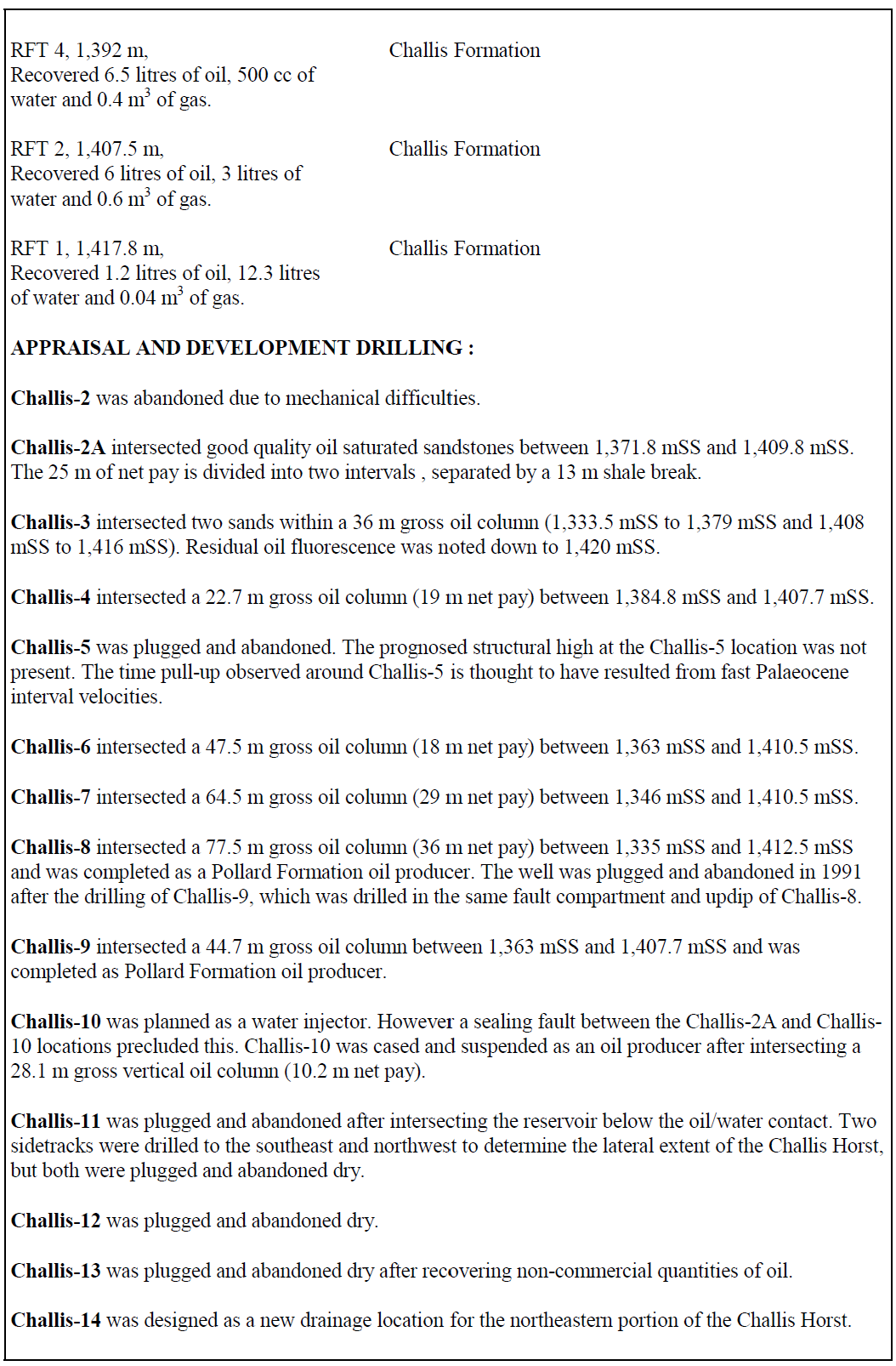
Класс Месторождения: Среднее
Тип Месторождения: Нефтяное
Местоположение:
Местность:
Стадия разработки: В консервации
Год открытия: 1984
Источник информации:
Метод открытия:
Площадь: 18.22 км²
Challis oil field
The Challis oil field was discovered in 1984 when Challis-1, drilled on a Triassic horst block on the Jabiru Terrace (Vulcan Sub-basin), intersected a 29 metre gross oil column within the Challis Formation. The Triassic, reservoir sands at Challis sub-crop the Valanginian unconformity and are sealed by basal claystones, marls and carbonates of the Bathurst Island Group (Wormald, 1988; Gorman, 1990).
In 1988, Cassini-1 tested a separate culmination on the same structural trend five kilometres to the southwest of Challis-1. The well flowed oil and associated gas from the same reservoirs intersected by Challis-1. The oil pool intersected by Cassini-1 is separated from the Challis accumulation by a low relief saddle. The oil-water contact at Cassini is 7 metres lower than at Challis.
The Challis and Cassini oil fields are located in 106 metres of water, approximately 600 kilometres west of Darwin. Following early appraisal drilling on Challis (Challis-2 through 6) and the discovery of the Cassini oil pool in 1988, the field development plan was amended and the joint development of Challis and Cassini commenced. At date of writing, 13 appraisal/development wells had been drilled on Challis and one appraisal well on Cassini.

Production from Challis / Cassini commenced in December 1989. Production facilities comprise an FPSO vessel moored to a single anchor leg, rigid arm, mooring system (consisting of a mooring base on the sea floor and a mooring column connected to the FPSO by a steel yoke). A total of 80 kilometres of flow line and control umbilicals connect eleven sub-sea wells to the FPSO. The FPSO is a purposebuilt, moored barge designed as a production storage and offloading facility.
Initial oil reserves at Challis / Cassini have been estimated at 56.6 million barrels and, at end 2001, remaining reserves at 2.6 million barrels. (Northern Territory Departmentof Business, Industry and Resource Development, 2003).


 >
>
Data source: Cadman, S.J. and Temple, P.R., 2004. Bonaparte Basin, NT, WA, AC & JPDA, Australian Petroleum Accumulations Report 5, 2nd Edition, Geoscience Australia, Canberra.
Следующее Месторождение: Remora 1